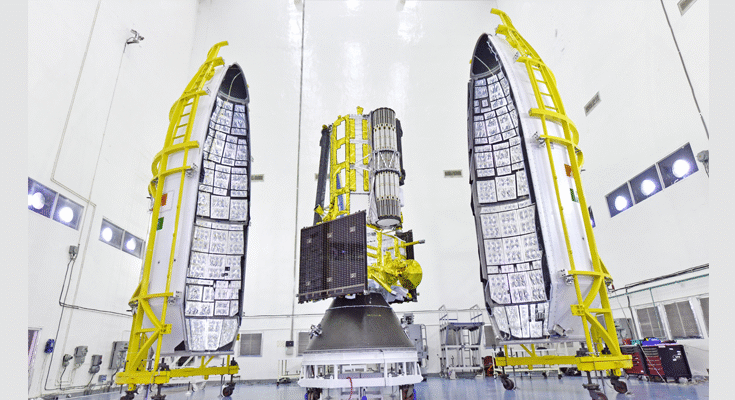News Desk: In a historic stride for Indo-US space collaboration, the Indian Space Research Organisation (ISRO) will launch the NASA-ISRO Synthetic Aperture Radar (NISAR) satellite—its first joint Earth observation mission with NASA—on July 30, 2025 at 5:40 PM IST. The launch will take place from the Satish Dhawan Space Centre (SDSC), Sriharikota, aboard the GSLV-F16 rocket.
NISAR will be positioned in a Sun-synchronous orbit at an altitude of 743 km with a 98.4° inclination. Weighing 2,392 kilograms, the satellite will become the first Earth observation satellite to employ dual-frequency synthetic aperture radar (SAR) technology—L-band (NASA) and S-band (ISRO)—mounted on a cutting-edge 12-meter unfurlable mesh reflector antenna developed by NASA.
What sets NISAR apart is its ability to deliver high-resolution, all-weather, day-and-night imagery, scanning the Earth’s surface with a wide 242 km swath using SweepSAR technology—a first-of-its-kind radar innovation.
🌍 Historic Launch Ahead: ISRO Set to Launch NISAR, a joint satellite with NASA !
🚀 On July 30, 2025 at 17:40 IST, ISRO’s GSLV-F16 will launch #NISAR, the first joint Earth observation satellite by ISRO & NASA, from Sriharikota.
🛰️ NISAR will scan the entire globe every 12… pic.twitter.com/4Mry076XSZ
— ISRO (@isro) July 21, 2025
The satellite is designed to capture changes as small as a few millimeters on the Earth’s surface. Its applications include monitoring land deformation, tracking ice sheet movements, studying vegetation patterns, and observing soil moisture and surface water resources. Additionally, it will support efforts in disaster response, storm tracking, sea ice classification, and maritime surveillance.
Developed over more than a decade of close technical cooperation between ISRO and NASA’s Jet Propulsion Laboratory (JPL), NISAR marks a significant milestone in international space science collaboration.




